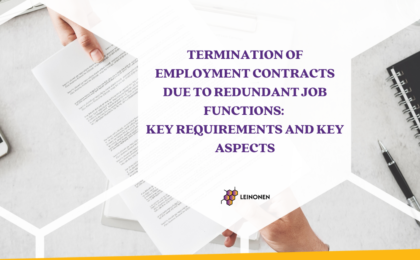Explanation regarding issuing VAT invoices for advanced payments and afterwards – for “final” VAT invoice. Below is an explanation regarding issuing VAT invoices for advance payments received and issuing “final” VAT invoice for the supply of goods/services.
1. VAT invoice should be issued for advances payment received if such payment is subject to VAT.
2. When a seller of goods/services finalizes the transaction, a “final” VAT invoice should be issued. The “final” invoice should indicate the difference between the amount of total value of transaction and the amount of advanced payment. VAT should be calculated on the amount of difference.
Until 1 October 2016, despite the fact, that VAT was applied to advanced payment and the invoice was issued, the “final” VAT invoice should have contained overall costs of goods/services and VAT amount.
Please find below the example, which illustrates changes in forming the advanced payment VAT invoices (total value of a transaction – EUR 8 000):
| Advanced payment VAT invoice | „Final“ VAT invoice | ||
|
Until 1 October 2016 | The total value (including VAT) | EUR 3 000 | EUR 8 000 |
| Taxable amount | EUR 2 479 | EUR 6 612 | |
| VAT (21%) | EUR 521 | EUR 1 388 | |
| From 1 October 2016 | The total value (including VAT) | EUR 3 000 | EUR 5 000 |
| Taxable amount | EUR 2 479 | EUR 4 132 | |
| VAT (21%) | EUR 521 | EUR 868 |




